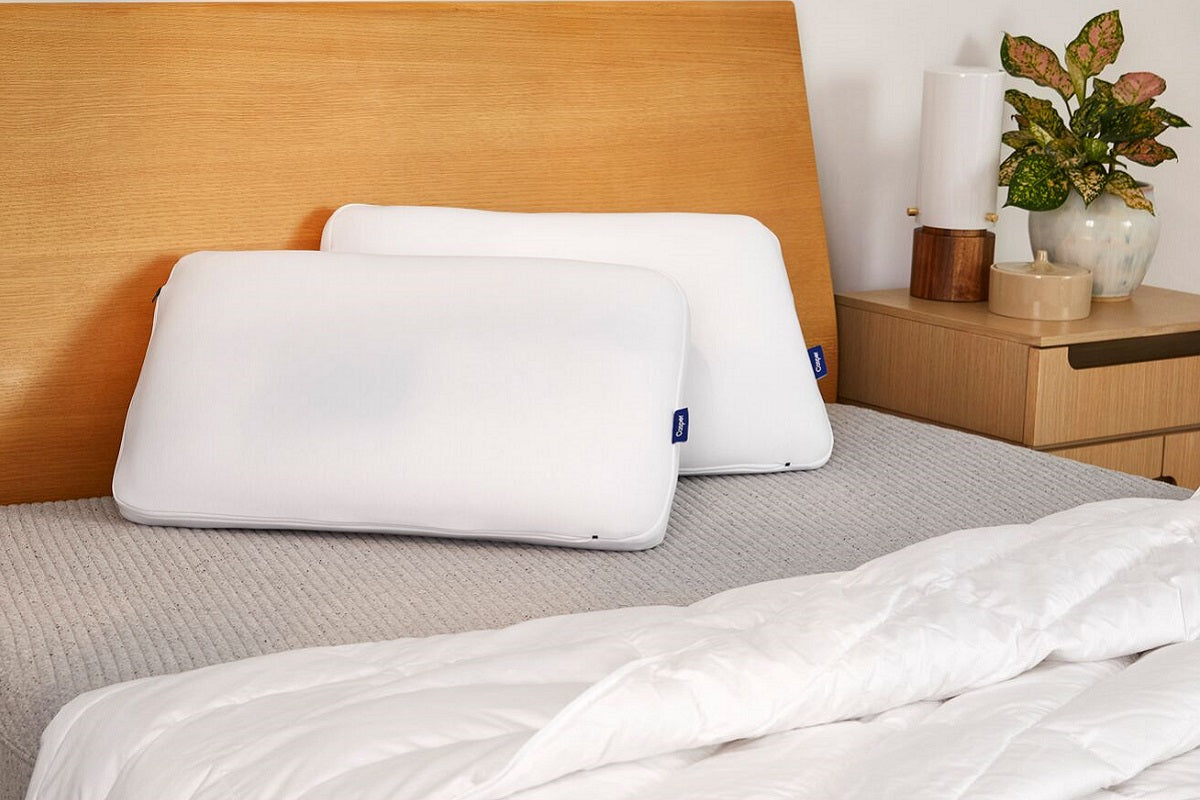Are you dreaming of sitting by a roaring fireplace but can’t feel past the drafty corners of your bedroom? We’ve been there—and we get it. When the days get shorter and the nights feel chillier, even the thought of sleeping in cold weather might set your teeth chattering. Combat this with some top tips and tricks to staying warm throughout the night in a cold room.
Just how do you stay warm in a cold room? For starters, we recommend swapping out your regular bedding for warm sheets for winter. Then, pair that strategy with a few tips outlined below.
To put those wintry shivers to bed, we’re diving into the best seasonal practices that’ll show you how to stay warm when sleeping through a cold night. Here are four toasty ideas to keep you snug all season.
Troubleshoot the Cold: What’s Stealing Your Warmth?
Stay cozy by identifying and addressing the main issues. Before diving into the best ways to warm up your home space, it helps to understand why your room feels like the Arctic. Check these common culprits that might be affecting your room's temperature:
- Drafty windows & doors – Even the tiniest gaps let cold air sneak in, compromising your warm space.
- Poor insulation – Insufficient insulation in walls, floors, and ceilings can lead to heat loss.
- Blocked vents or radiators – Furniture, rugs, or curtains could be preventing heating from circulating properly.
- Inconsistent heating – Your thermostat might be off, or certain rooms might need a little boost.
Once you've done a quick warmth audit, here’s how to transform your cold space into a cozy retreat. Don't rely on just one method; combine multiple tips for warmer results.
#1 Adjust Your Thermostat (And Hack Your Heating Strategy)
First things first: your thermostat. During the morning and afternoon, you might prefer to give your thermostat a bit of a break, favoring your warm clothes like an]oversized hoodie and fuzzy sweatpants for warmth instead. However, when it comes time for some shut-eye, it may be time to turn up the dial a few notches.
- Test different temperatures – The optimal sleeping temperature for most people is 66-70°F,1 but try adjusting by a degree or two until you find what works for you.
- Use a programmable thermostat – Set it to start heating your room an hour before bed, or adjust it manually.
- Circulate the heat – If you have a ceiling fan, switch it to rotate clockwise at a low speed to push warm air downward.
#2 Weatherproof Your Windows and Doors
Allow no cold air to get the best of your house. While you may have found your match made in thermostat heaven, if you’re surrounded by drafty windows and doors, it’s bound to be a short-lived romance (at best). In other words, you’re not doing yourself—or your chilly bedroom—any favors by leaving your carefully managed climate control settings susceptible to the threats of a poorly insulated home where cold air can seep through.
To combat those mid-winter gusts and gales, we recommend a few draft-protecting strategies:
- Check for cold leaks – Identify the spots where warm air escapes and cold enters your house. Use a candle or incense near windows and doors. If the smoke moves, you’ve found a draft!
- Use a sealing tape – To keep cold air from seeping through the cracks of your windows, try sealing them shut with weather stripping tape. Typically available in silicone or foam, these adhesive strips are easy to install and an effective way of blocking wind on a blustery day.
- Switch to heavier drapes – Light, airy curtains may be the softness you’re looking for in the summer months. But when the temperatures drop, sleeping in a cold room could become a lot more bearable by swapping them out for thick, thermal drapes instead.
- Make your own door snake – Have some spare fabric and a few cups of dry rice on hand? If so, settle in for a cozy craft day and use them to make your own door snake. Once finished, prop it up against the bottom of a draft-prone door and relish the extra warmth—and a potentially lower heating bill.
- DIY a window insulator – A layer of clear heat-shrink plastic can add an extra barrier.
#3 Layer Your Bedding—The Right Way
Making your bed on busy mornings can sometimes feel like a real chore—but once it’s done, it feels like you can conquer anything. However, before you declare absolute victory, make sure you’ve made it the right way.
When the temperatures are low, encourage your natural body heat and bedding to work together by making your bed using layers. Start with a breathable, moisture-wicking fitted and top sheet—sateen or flannel works great in cooler months. Then, add your coziest layers, like a woven blanket or quilt, and finish with a plush duvet on top. Add a touch of softness with a better-than-sweats throw blanket, and you’ve got the ultimate recipe for comfort.
#4 Use a Hot Water Bottle or Heated Blanket
So, you’ve layered your bedding like a pro, and you’re still shivering in your sleep? It may be time to get some assistance from warm water bottle or heated blanket. If you’re opting to use a hot water bottle as your snuggle buddy, just be sure to:
- Use hot—not boiling—water
- Wrap it in a thin kitchen towel, cloth, or blanket to avoid making direct contact with your skin
If you’re taking the heated blanket approach, we recommend looking for one a few different timer settings. To stave off the risk of overheating, you probably won’t want to keep your blanket on full blast throughout the night. Instead, consider setting it for 1-2 hours while falling asleep. Then, let your cozy bedding take over from there.
#5 Warm Up with Movement!
Sometimes, the fastest way to shake off the chill is to, well, shake things up. A few minutes of light movement can boost your circulation and help your body generate heat naturally—no extra blankets required. Try a quick round of stretches, some gentle yoga poses, or even a brisk walk around your home before you slip under the covers. Your muscles will thank you, and your bed will feel that much cozier.
Stay Warm on Cold Nights with Casper
We know that feeling warm and cozy on a cold night can be essential to a blissful night’s sleep. That’s why, at Casper, we recommend taking some time to understand how seasonal changes may affect your sleeping habits and adopting a few of the tips we’ve outlined above.
Say goodnight to chattering teeth and shivering shoulders. For a softer, warmer, and dreamier sleep, peruse our selection of award-winning sheets and fluffy duvets today.
Sources:
- The Sleep Doctor. What is the best temperature for sleep? https://thesleepdoctor.com/sleep-hygiene/best-temperature-for-sleep/
- The Spruce. 9 Ways to Warm Up the Bedroom Without Running the Heat. www.thespruce.com/warm-up-winter-bedroom-without-heat-4118291
- AASM. Winter, sleep and your circadian rhythms. https://sleepeducation.org/winter-sleep-and-your-circadian-rhythms/
- Mental Floss.12 Toasty Tips For Staying Warm in Cold Weather. https://www.mentalfloss.com/article/60076/12-toasty-tips-staying-warm-cold-weather











